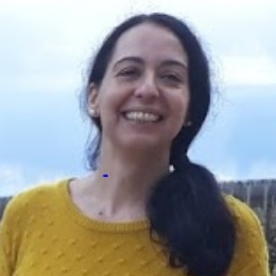Advanced Technologies in Digitizing Cultural Heritage
A special issue of Applied Sciences (ISSN 2076-3417). This special issue belongs to the section "Computing and Artificial Intelligence".
Deadline for manuscript submissions: closed (10 December 2022) | Viewed by 233503
Special Issue Editors
Interests: interactive digital storytelling; virtual reality; digital heritage
Special Issues, Collections and Topics in MDPI journals
Interests: cultural informatics; personalization; profiling
Special Issues, Collections and Topics in MDPI journals
Interests: digital humanities; digital heritage; user experience; evaluation
Special Issues, Collections and Topics in MDPI journals
Interests: distributed systems; social networks; big data; data management; data mining; information retrieval/filtering; databases; digital libraries
Special Issues, Collections and Topics in MDPI journals
Special Issue Information
Dear Colleagues,
From cultural disasters, such as the fire damage at the Notre Dame de Paris in 2019 and the National Museum of Brazil in 2018, to the current COVID-19 pandemic, the need to digitize cultural heritage is essential. Past efforts, mainly in the frameworks of specific projects, focused on digitizing items and, in some cases, monuments. However, the rich repositories created are not often used in a meaningful manner, and their content is not returned to the public in a way that supports the understanding of, interpretation of and reflection on cultural heritage. Over the last few years, there have been some systematic efforts to allow the exploitation of such repositories, by applying methods for data curation and digitization in order to support the effective access to, exploration of, presentation of and preservation of millions of digital heritage assets (i.e., AIR principles).
However, the challenge remains within the domain to conceptualize, design and put into practice new applications that realize the potential for the substantive and meaningful use (and reuse) of digital assets. Advanced technologies need to be coupled with new concepts and experience design paradigms that will promote user engagement with the past through critical reflection and perspective taking, following an inclusive and personalized approach. Current advances in technologies (e.g., linked data, virtual/augmented/extended reality, chatbots and digital storytelling), when combined with fundamental technological fields, such as artificial intelligence and machine learning, create new opportunities to explore innovative technological solutions for the effective (re)use of digital cultural heritage assets. This Special Issue aims to spotlight cutting-edge research in technology-driven cultural heritage, as well as help in the alignment of these endeavors.
Dr. Akrivi Katifori
Dr. Angeliki Antoniou
Dr. Areti Damala
Dr. Paraskevi Raftopoulou
Guest Editors
Manuscript Submission Information
Manuscripts should be submitted online at www.mdpi.com by registering and logging in to this website. Once you are registered, click here to go to the submission form. Manuscripts can be submitted until the deadline. All submissions that pass pre-check are peer-reviewed. Accepted papers will be published continuously in the journal (as soon as accepted) and will be listed together on the special issue website. Research articles, review articles as well as short communications are invited. For planned papers, a title and short abstract (about 250 words) can be sent to the Editorial Office for assessment.
Submitted manuscripts should not have been published previously, nor be under consideration for publication elsewhere (except conference proceedings papers). All manuscripts are thoroughly refereed through a single-blind peer-review process. A guide for authors and other relevant information for submission of manuscripts is available on the Instructions for Authors page. Applied Sciences is an international peer-reviewed open access semimonthly journal published by MDPI.
Please visit the Instructions for Authors page before submitting a manuscript. The Article Processing Charge (APC) for publication in this open access journal is 2400 CHF (Swiss Francs). Submitted papers should be well formatted and use good English. Authors may use MDPI's English editing service prior to publication or during author revisions.
Keywords
- digital asset reuse
- virtual reality
- linked data
- digital storytelling
- data mining
- artificial intelligence
- machine learning
- chatbots
- augmented reality
- mixed reality
- data exploitation
Benefits of Publishing in a Special Issue
- Ease of navigation: Grouping papers by topic helps scholars navigate broad scope journals more efficiently.
- Greater discoverability: Special Issues support the reach and impact of scientific research. Articles in Special Issues are more discoverable and cited more frequently.
- Expansion of research network: Special Issues facilitate connections among authors, fostering scientific collaborations.
- External promotion: Articles in Special Issues are often promoted through the journal's social media, increasing their visibility.
- Reprint: MDPI Books provides the opportunity to republish successful Special Issues in book format, both online and in print.
Further information on MDPI's Special Issue policies can be found here.








